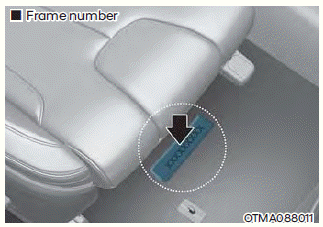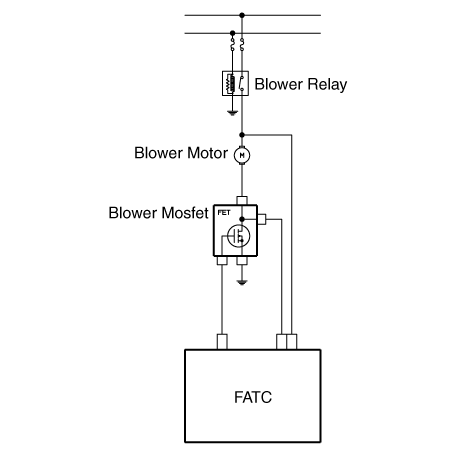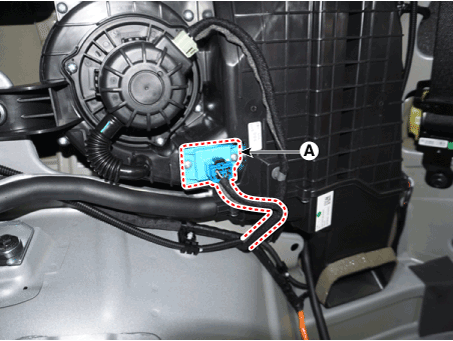Hyundai Santa Fe: Rear Heater / Rear Power Mosfet. Repair procedures
Hyundai Santa Fe (TM) 2019-2025 Service Manual / Heating,Ventilation And Air Conditioning / Rear Heater / Rear Power Mosfet. Repair procedures
| Inspection |
| 1. |
Turn the ignition switch ON.
|
| 2. |
Manually operate the control switch and measure the voltage of the blower
motor.
|
| 3. |
Select the control switch to raise the voltage until it reaches high
speed.
Specification
|
| 4. |
If the measured voltage is not within specification, substitute with
a known-good power mosfet and check for proper operation.
|
| 5. |
Replace the power mosfet if it is proved that there is a problem with
it.
|
| Replacement |
| 1. |
Disconnect the negative (-) battery terminal.
|
| 2. |
Remove the luggage side trim [RH].
(Refer to Body -"Luggage Side Trim")
|
| 3. |
Separate the connector and loosen the mounting screw ,remove the power
mosfet (A).
|
| 4. |
Install in the reverse order of removal.
|
 Rear Blower Motor. Repair procedures
Rear Blower Motor. Repair procedures
Replacement
1.
Disconnect the negative (-) battery terminal.
2.
Remove the luggage side trim [RH]...
 Controller
Controller
..
Other information:
Hyundai Santa Fe (TM) 2019-2025 Owner's Manual: SRS care
The SRS is virtually maintenance-free and there are no parts you can safely service by yourself. If the SRS air bag warning light does not illuminate when the Engine Start/Stop button is in the ON position, or continuously remains on, have the system be immediately inspected by an authorized HYUNDAI dealer...
Hyundai Santa Fe (TM) 2019-2025 Service Manual: Wireless Power Charging Unit. Repair procedures
Removal Handling wireless charging system parts by wet hands may cause electric shock. 1. Disconnect the negative (-) battery terminal...
Categories
- Manuals Home
- 4th Generation Santa Fe Owners Manual
- 4th Generation Santa Fe Service Manual
- Side air bags
- Head-up display settings
- Child-protector rear door locks
- New on site
- Most important about car
Vehicle Identification Number (VIN). Vehicle certification label. Tire specification and pressure label
Vehicle Identification Number (VIN)

The vehicle identification number (VIN) is the number used in registering your vehicle and in all legal matters pertaining to its ownership, etc.
The number is punched on the floor under the passenger seat. To check the number, open the cover.
Copyright © 2025 www.hsafe4.com


